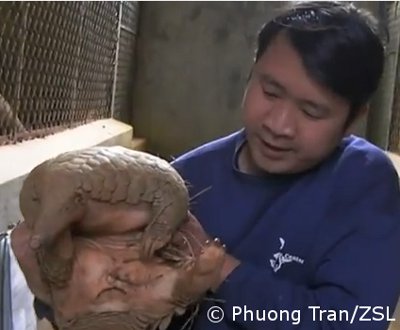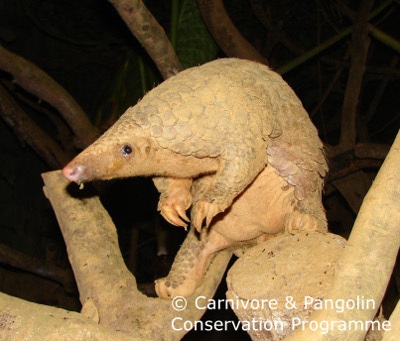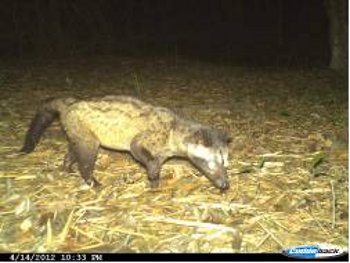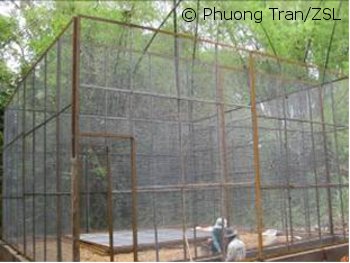
A previous blog and video introduced our Fellow Tran Quang Phuong who is working as part of the Carnivore and Pangolin Conservation Program (CPCP) team in Vietnam to fully rehabilitate and release Sunda pangolins (Manis javanica) that have been confiscated from the illegal wildlife trade industry. Here is the latest update…
Conclusions from the monitoring data of the captive sunda pangolins’ behaviour have allowed the CPCP to select two suitable candidates (‘P3’ and ‘P27’) for release at Cat Tien National Park.
Both pangolins are exhibiting natural digging behaviours and are excellent tree climbers. They were recently introduced to a live ant diet to get them used to wild prey, and have responded very well to this. The remaining four pangolins will continue to be monitored and adjustments made to their environment until they are ready to be released.

Another aim of the project is to create a pangolin gene ‘library’ that can be used to assess the history and origins of trade-confiscated pangolins and gain greater insights into trade routes. A formal collaboration has been set up between CPCP and a Vietnamese conservation geneticist, Dr Minh Duc Le, who was trained at the American Natural History Museum but is now based at the Centre for Natural Resources and Environmental Studies (CRES) in Hanoi, Vietnam. The plan is to take various biological samples of blood, scales, hair and faeces from each of the pangolins to see whether these are effective ways to record pangolin genetic codes.
A rapid pangolin survey in Cat Tien National Park was started in March and will continue until the end of June. CPCP’s field team have been looking for potential wild pangolin signs (prints, faeces, claw marks) to see how many may be in the park already. Fourteen camera traps have been placed throughout the core area of Cat Tien, and the team has now completed a total of over 600 hours of day and night activities to pin down any pangolin activity in the park. Although there have been no records of Sunda pangolins so far, the field team has successfully recorded 26 other mammals and more than 115 bird species.


In addition, the team has selected five possible release sites in Cat Tien. They looked at habitat type, how close it was to water, soil type, number of tree hollows (for nesting), species of ant and termite present and number of nests, and whether there were any signs of disturbance. The team is currently comparing the data to assess which release sites are the most suitable for the pangolins.

Meanwhile, CPCP has completed the construction of a 70 sq/m acclimatisation enclosure, and planted native trees and plants inside it to simulate the natural environment. The first pangolin to be released will be transferred there in July, and there it will spend a month in quarantine before being taken to the confirmed release site.
Staff from other organisations have benefitted too: CPCP ran a three day training workshop in the Management and Husbandry of Sunda Pangolins for staff from the Angkor Centre for Conservation of Biodiversity (ACCB) and the Phnom Tamao Wildlife Rescue Centre in Cambodia.
The ongoing conservation work of CPCP and EDGE depends on your support, please donate to the programme to help us continue our capacity building all over the world!